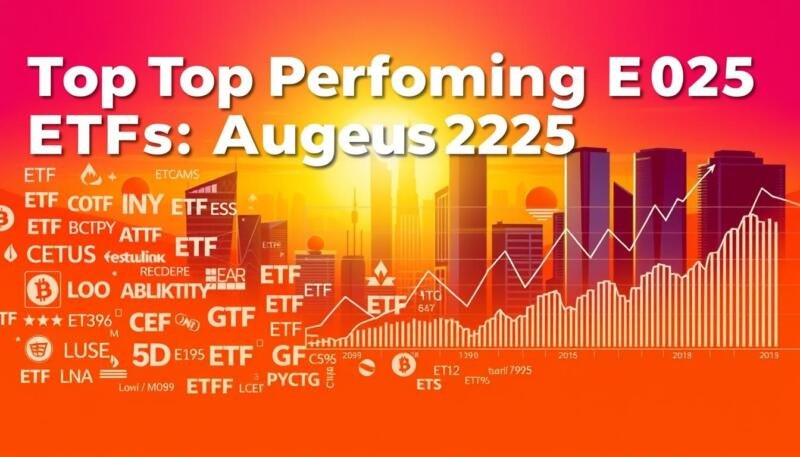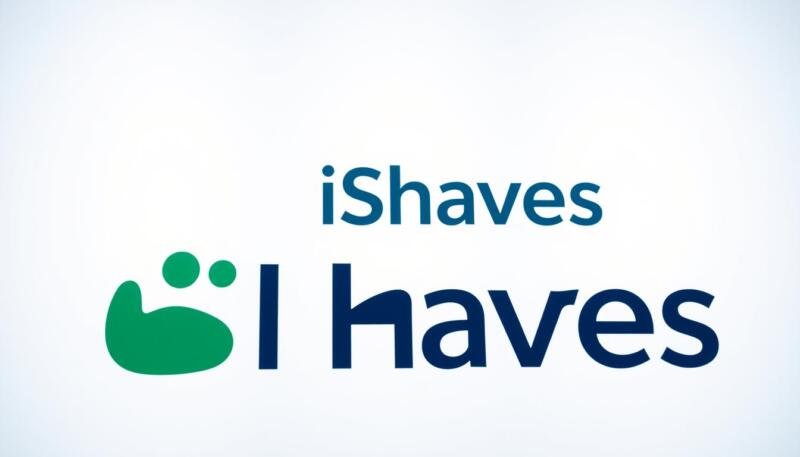
Top best performing ETFs USA 2026

One summer morning you open your trading app and spot an unexpected gainer. A small-value fund and a gold-miners option-income strategy led the month. You feel curiosity and a pinch of doubt about chasing returns.
This short guide gives you a clear, friendly overview of exchange-traded funds and how they can fit into your portfolio. You’ll learn why an etf is a cost-effective, tax-smart building block that lets you trade intraday and access the broader stock market.
We show how monthly leaders are picked with objective data and why names like GDXY and RZV earned a spot in the list. You’ll get practical tips on balancing curiosity about eye-catching returns with the discipline needed to evaluate risk, fees, and process before you act.
Use this as a starting map: compare tactical winners to a resilient core, and avoid chasing past performance. The goal is to help you make clearer choices as an investor in today’s market.
- What “best performing ETFs USA” means for you
- How we screened and sourced the data
- August 2025’s standout performers you should know
- Buy-and-hold core: iShares ETFs with top Analyst confidence
- Thematic and commodity leaders driving recent returns
- Core U.S. beta or small‑cap value tilt? Choosing your path
- Your next steps to put this ETF roundup to work
What “best performing ETFs USA” means for you
When a one-month leader appears, you should ask whether that surge reflects a lasting process or a short-lived factor tailwind. This section helps you weigh quick gains against durable evidence so your choices match your goals.
Short-term leaders vs. long-term track records
Short-term winners can expose strategy biases. A single hot month may come from momentum in a sector or a category tilt toward small value.
Focus on a multi-year record to judge consistency. Look at how the fund behaved across market cycles before you chase a headline return.
Key metrics: total return, expense ratio, assets, and Morningstar ratings
- Total return captures price moves plus reinvested distributions. Use it to compare funds in the same category over the same term or year.
- Expense ratio matters: lower costs compound for you. When two etfs share a category, fees can decide the winner over time.
- Assets under management affect spreads and redemption risk. Larger funds tend to trade tighter and resist closures better.
- Interpret Morningstar ratings alongside the Morningstar Medalist and star ratings. One is backward-looking; the other adds analyst conviction about future prospects.
"Look across cycles, not just months, to understand whether returns reflect skill or simple factor exposures."
Use this simple checklist: confirm category, read the prospectus, compare expense ratio, review total return across multiple periods, and weigh Morningstar inputs. For a practical example and deeper screening details, see our top-performing list.
How we screened and sourced the data
We started by locking the universe to a single, consistent data source to make apples‑to‑apples comparisons. That approach helps you trust labels and returns when you compare one category to another.
Scope and exclusions: the screen used Morningstar’s US equity universe and omitted exchange‑traded notes so the list focuses on ETFs that hold baskets of securities and avoid issuer credit risk.
Liquidity and tradability: we filtered out any fund with under $100 million AUM to reduce closure risk and improve execution for everyday investors.
Snapshot and source
All results use a month‑end snapshot for August 2025 and rely on Morningstar Direct for returns and characteristics. This lets you verify the same data in a familiar professional dataset (etfmorningstar alignment).
"Seven of the monthly top 10 fell into the small‑value category, which averaged a 7.10% gain that month."
- Every fund maps to Morningstar taxonomies so category comparisons stay consistent.
- We captured market context to avoid mixing periods and stale figures.
August 2025’s standout performers you should know
In August 2025, several funds posted sharp monthly gains that tell a clear story about factor and sector rotation. Below is a compact rundown so you can see strategy, fees, and rating context at a glance.

YieldMax Gold Miners Option Income Strategy (GDXY)
13.47% month: paired an option income overlay with exposure to gold miners. Neutral Morningstar Medalist; launched May 2024; one‑year +32.83% (1st percentile).
Invesco S&P SmallCap 600 Pure Value (RZV)
11.64% month: Small Value category; ER 0.35%; ★★ rating; one‑year +11.05% (10th percentile).
EA Bridgeway Omni Small‑Cap Value (BSVO)
10.68% month: ER 0.47%; ★★★ and Silver Medalist; one‑year +4.63% (55th percentile).
Other notable names
- FYT - 9.95% month; ER 0.72%; Neutral Medalist; small‑value tilt.
- SVAL - 9.32% month; ER 0.20%; Gold Medalist; low fee factor fund.
- XMVM - 8.91% month; ER 0.39%; ★★★★★; Silver Medalist; momentum + value blend.
- ISMD, DSMC, MGMT, AVSC - 8.64–9.20% month; varied ERs and medalist ratings to weigh against total return and category fit.
"Review fees and medalist ratings before assuming a monthly pop will persist."
If you want tools to compare fees and tradability, check our robo advisor apps guide for additional screening ideas.
For a long-term core, you want holdings that act like a steady foundation through cycles. Below are iShares choices that analysts trust and you can use as durable building blocks for a simple portfolio.

IVV delivers S&P 500 exposure with tight tracking and securities lending to help offset costs. It’s a classic 500 etf for a large-cap anchor with a low fee.
ITOT tracks the S&P Total Market Index, pulling in mid- and small-caps while keeping large-cap stability. Choose it when you want a broader cap-weighted core.
IXUS tracks the MSCI ACWI ex USA IMI for wide ex‑US coverage. It’s an efficient complement to U.S. exposure; see our guide to international ETFs for allocation ideas.
AGG is a conservative investment-grade core bond fund. IUSB adds core‑plus breadth into high yield and EM debt so you can calibrate income and risk.
LifePath offers a one-stop glidepath using low-cost building blocks for hands-off investors. Analysts gave these ishares core offerings Gold-level conviction for long-term buy-and-hold use.
"Choose low friction, clear roles, and strong tracking to keep more of your returns."
For background on investing iShares funds, check this Morningstar primer: investing iShares funds.
Thematic and commodity leaders driving recent returns
Momentum clustered around commodity plays and select themes as markets re‑priced risk. You saw miners and physical gold exposures surge on one‑month and one‑year tables.

Gold and gold miners: GDXJ, GDX, and iShares Gold Producers topped short‑term and multi‑year lists. Interactive Investor shows GDXJ +20.7% in one month and +71.9% over a year. Physical gold ETCs also ranked highly among buy lists.
Defense and aerospace
VanEck Defense ETF led sector movers with a strong one‑year return (+64.4%). Geopolitical catalysts drove demand, lifting names across the defense supply chain.
Blockchain and crypto adjacency
Digital‑assets themes posted momentum, but these exposures remain volatile. Treat them as tactical allocations and size positions accordingly.
Tech growth tailwinds
NASDAQ‑100 and semiconductor funds appear on long‑run leaderboards. Over three years, semiconductors and iShares Gold Producers led gains, showing how innovation and commodity cycles can both compound returns.
"Use thematic holdings to complement, not replace, your core; control position size and monitor distributions for income versus price appreciation."
- Ground decisions in the data: 1‑month, 6‑month, 1‑year, and 3‑year tables tell different stories.
- Balance thematic trades with core trust etf holdings to manage volatility.
- Check distribution policy when you expect income from these investments.
Core U.S. beta or small‑cap value tilt? Choosing your path
Choosing between a broad market core and a targeted value tilt shapes how your portfolio behaves through cycles.
S&P 500 ETF vs. Total Market ETF:
IVV tracks the S&P 500 and gives you large‑cap stock exposure with low cost. ITOT covers the S&P Total Market Index and adds mid‑ and small‑cap shares for wider coverage.
Use IVV if you want a simple, classic core. Pick ITOT when you prefer broader representation of the stock market and fewer gaps between holdings.
Small‑value standouts: RZV, SVAL, XMVM
Small‑value funds give a factor tilt that can lift returns over the long term but raise short‑term swings.
- RZV - August +11.64%, ER 0.35%, Neutral, ★★; higher volatility but clear value exposure.
- SVAL - August +9.32%, ER 0.20%, Gold Medalist, ★★; lower fees and a compact category tilt.
- XMVM - August +8.91%, ER 0.39%, Silver, ★★★★★; one‑year +11.52% (8th pct.).
Compare fees and assets when you add a sleeve. SVAL’s 0.20% vs RZV’s 0.35% compounds over term and matters in tax‑advantaged accounts.
"Add a modest value slice to a core only if you can tolerate higher swings and commit to the long term."
Practical approach: keep a dominant core (IVV or ITOT) and allocate a small percentage to value funds. Track category, volume, and assets to confirm tradability before you buy shares.
Your next steps to put this ETF roundup to work
Pick a central anchor like a broad-market or S&P tracking fund then layer in complementary exposures.
Clarify your core and use ishares core options for international or bond sleeves. Build a short watch list of thematic etfs and keep those allocations modest versus your core.
Before you buy any fund, confirm category fit, compare expense ratio, and check total return across multiple years. Use Morningstar Investor tools and the Morningstar Medalist Rating as one input.
Document target allocations, rebalance rules, and a yearly review cadence. For income goals, inspect distribution policy or option overlays to match risk and tax needs. Stay disciplined: a clear core plus small, tested tilts helps you pursue opportunity while managing volatility.
If you want to know other articles similar to Top best performing ETFs USA 2026 you can visit the category Investing.






Leave a Reply